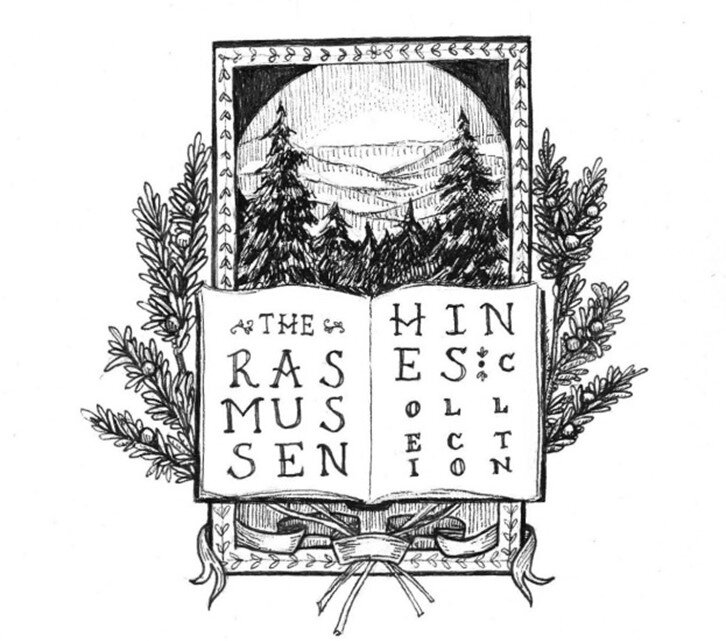Edward of Langley (c.1373-1415), 2nd Duke of York, manuscript indenture dated 1398
Indenture, 1398 Oct. 16, between Edward of Langley, Duke of Aumale, and William and Joan Peytevyn of the manor of Oxeye [Oxhey] (Herts.)] Ms. document on vellum in Anglo-Norman with seal.135 x 297mm.13 lines, in brown ink, indented chirograph at head, 4 small wormholes, folds, browned, red wax seal of Aumale's signet, edges chipped with loss but image strong, housed in a full morocco box.
“Indenture by the most puissant prince Duke of Aumale Earl of Rutland & Cork and Constable [Edward of Langley, second Duke of York] to William Peytevyn esquire, and Joan his wife of the Manor of Oxeye [Oxhey] and its appurtenances in the county of Hertfordshire without waste of wood on the estate, the duke also agrees to pay William £10 yearly.”
Edward of Langley (c.1373-1415), second Duke of York, Duke of Aumale, Earl of Rutland and Cork (among other honors) was the eldest son of Edmund, first Duke of York, the fifth son of Edward III and his wife Isabella of Castile, daughter of Pedro the Cruel. Edward was a favorite of his cousin Richard II, who bestowed numerous titles and honors upon him. At the time this document was signed, Edward was caught up in the events that would eventually lead to Richard’s downfall. In 1398, having already eliminated some of his most powerful noble opponents (with Edward’s assistance), Richard exiled Henry Bolingbroke and effectively stripped Parliament of its power. Bolingbroke led a rebellion and deposed Richard, becoming Henry IV.
Despite his loyalty to Richard, Edward eventually acquiesced to Henry IV’s usurpation of the crown but was stripped of many of his titles. From then on, he slipped in and out of the king’s trusted circle, even facing an accusation of conspiracy against the crown in 1405, from which he fought his way back. Edward served with Henry V’s army in France and was present at the siege of Harfleur. He died in the battle of Agincourt, leading the right wing of Henry’s famed “band of brothers.”
Edward appears in two of William Shakespeare’s history plays, Richard II (in which he is called Aumerle) and Henry V (called York). In Richard II, Aumerle schemes to overthrow the newly victorious Henry IV, but Aumerle’s father, the Duke of York, discovers the plot and reveals it to the king. When Aumerle’s mother, the Duchess of York, pleads for mercy, Henry IV spares Aumerle’s life. The historical Aumerle likely did participate in this conspiracy but betrayed it to the king and helped quash the rebellion. In Henry V, having inherited the title from his father, York appears briefly in 4.3, asking to lead the vanguard at the battle of Agincourt; Exeter then describes his death in 4.6. Although their relationship is not acknowledged, Henry V also includes York’s brother, the Earl of Cambridge, who was executed for conspiring against the king. Cambridge’s four-year-old son, Richard, became the Duke of York after his uncle died at Agincourt and would eventually lead his supporters against Henry VI, sparking the Wars of the Roses.
The document relates to a manor known as Oxhey Richard, located in Watford, Hertfordshire. The property’s ownership history is labyrinthine, but essentially, Edward appears to have been acting as a trustee for a minor named Robert de Louthe. Amice de Louthe, Robert’s great-aunt, conveyed the manor to Edward in 1397 in trust for Robert. Joan de Louthe, Amice’s daughter, had a potential claim to the property. She and her husband, William Peytevyn, may have sold this interest in the manor to Robert de Louthe, with Edward acting as his proxy, in 1398.Although this document requires attention from a scholar familiar with Anglo-French legal documents of the period, it might be an example of the type of indenture known as a final concord (or fine of lands, fine) and was, essentially, a fake lawsuit. The two parties having already agreed to the transaction, the buyer brought suit against the seller. Both parties would ask the court’s permission to attempt to compromise before the court rendered judgment, then return and announce their agreed-upon terms. This was done to add authority to a transfer of property and to ensure that a record of the conveyance was held in the court archives. It was particularly common in transactions involving married couples, due to issues surrounding married women’s right to property ownership. Another document, signed by Edward in 1401, granted the widowed Joan Peytevyn the use of Oxhey for life.
Edward’s connection to the de Louthes is somewhat obscure. Robert de Louthe, the father of the minor Robert represented by Edward in this document, was the keeper of Hertford castle, in the service of Edward’s uncle John of Gaunt, the Duke of Lancaster and father of Henry Bolingbroke, the future Henry IV. By October 1398,Edward had married Philippa Mohun, the widow of Walter Fitzwalter, the third Baron Fitzwalter. Philippa’s previous husband and her father, John Mohun(second Lord Mohun), had both served under John of Gaunt in several military actions. In 1399, Philippa’s stepson Walter Fitzwalter, fourth Baron Fitzwalter, stood up in Parliament and accused Edward of participating in the death of the Duke of Gloucester, challenging him to personal combat. Fitzwalter was married to Joan Devereux; various court documents reveal that Fitzwalter and the Devereux family were also involved with the de Louthes, leading to legal actions regarding property. Fitzwalter and Joan acquired an interest in de Louthe land via Amice’s daughter Katherine and her husband Thomas Wybsnade. Supposedly, Katherine’s interest in the manor also eventually passed to Robert de Louthe; perhaps Walter Fitzwalter was another of his trustees. Either way, these connections hint that Edward may have become Robert de Louthe’s trustee via his wife’s connection to the de Louthe famiy.
Dr. Molly G. Yarn

